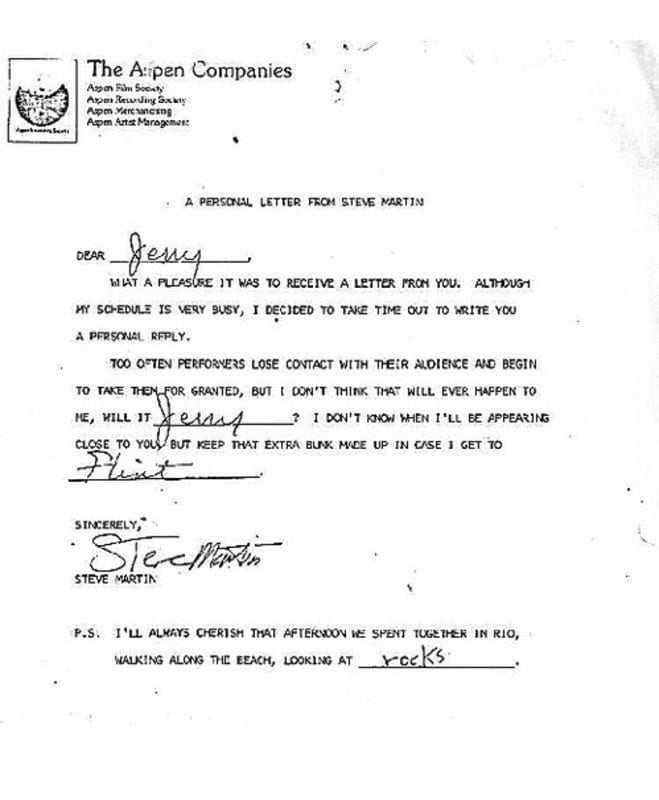Marketing Personalisation with the Father of the Bride

Steve Martin taught us a little personalisation can go an awfully long way.
“Although my schedule is very busy, I decided to take time out to write you a personal reply.”
Way back in the day (circa 1979-1987), before he made Father of the Bride and Cheaper by the Dozen II, Steve Martin was sort of a comedy god. Or at the very least he was very, very funny. And if, like Jerry, you had been sufficiently compelled by his funny stuff to write a fan letter to Steve Martin, you would have received this highly personal (and excellent) reply.

That’s right people, Steve Martin was into personalisation way before you were. Well, sort of. Steve recognised the problem posed by vast amounts of fan mail and his lack of resources to respond individually. Steve’s great insight was to flip the problem on its head and offer up a mock-personal response to each correspondent. Good work Steve, in another life you’d have made a great planner.
In 2015 we get to be a little more nuanced with our communications. There is no denying that personalisation should be considered a core tactic for marketers in B2B. Plenty of available data tells us that, in the right circumstances, consumers like it and it helps marketers to do their jobs.
According to Aberdeen, personalised emails can improve CTRs by up to 14% and conversion rates by up to 10%. Likewise, Hubspot found that in a study of 93,000 calls-to-action and millions of page views over a 12 month period, targeted calls-to-action had a 42% higher view-to-submission rate. Personalisation also helps with customer retention – in one study by Salesforce, 44% of marketers believed it to have a ‘significant impact’ on loyalty and retention.
And in a study by Yahoo, 78% of respondents were interested in receiving some kind of personalised content – believing that it was more relevant to them, and 74% of online consumers were frustrated when they were served ads, offers and promos that had nothing to do with their interests, according to a survey by customer identity data management specialists Janrain.
So, if done properly, personalised communications can provide marked improvements in performance as well as leading to happier customers.
A quick recap of some of the benefits of personalisation:
- More useful and relevant for customers
- Increased click through rates and cut through
- Improved conversion rates
- Improves retention rates
But, as Uncle Ben told Peter Parker in Spiderman, with great power comes great responsibility. As consumers wise up to the value of their personal data, the need to get personalised communications right becomes ever more pressing.
It can be a difficult line to walk – the benefits of personalisation can be offset if doing so introduces a layer of friction to the overall service. Customers need to feel that their data is secure and being used to benefit them and not just benefit the company. Data needs to be collected transparently and with consent, it can be annoying or worse still, creepy, to be served ads or sent emails and not be sure how the company got hold of your personal information.
In fact, according to Janrain, a massive 77% of consumers would trust businesses more if they explained how they’re using personal data.
Personalised communications can be a funny thing – there is no denying that they work; the stats speak for themselves. But marketing strategies need to focus on the customer’s needs, wants and preferences as well as what a marketer wants to achieve – and personalised communications will work best when they are addressing a specific need.
Simply because you have the technological capability to target customers with personalised messages, and there are stats to support its efficacy, doesn’t meant that you should.
But before you go personalising everything in sight just for the sake of it, ask yourself the following questions:
- Is this a fair exchange of information?
- How personalised or targeted do we need to be?
- How relevant do I really need to make my communication?
Are you personalising your communications because you can, or because it’s going to be beneficial to everyone involved? If you get it right, you can create a magical bond between brand and customer. Like the one Steve and Jerry shared that afternoon in Rio, walking along the beach. Looking at rocks.

